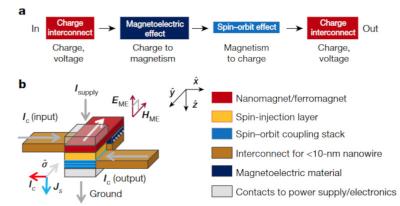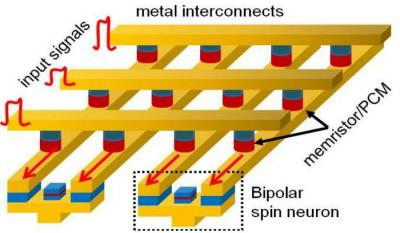IMEC and Intel researchers develop spintronic logic device
Researchers at imec and Intel, led by PhD candidate Eline Raymenants, have created a spintronic logic device that can be fully controlled with electric current rather than magnetic fields. The Intel-imec team presented its work at the recent IEEE International Electron Devices Meeting (IEDM).
An electronâs spin generates a magnetic moment. When many electrons with identical spins are close together, their magnetic moments can align and join forces to form a larger magnetic field. Such a region is called a magnetic domain, and the boundaries between domains are called domain walls. A material can consist of many such domains and domain walls, assembled like a magnetized mosaic.


